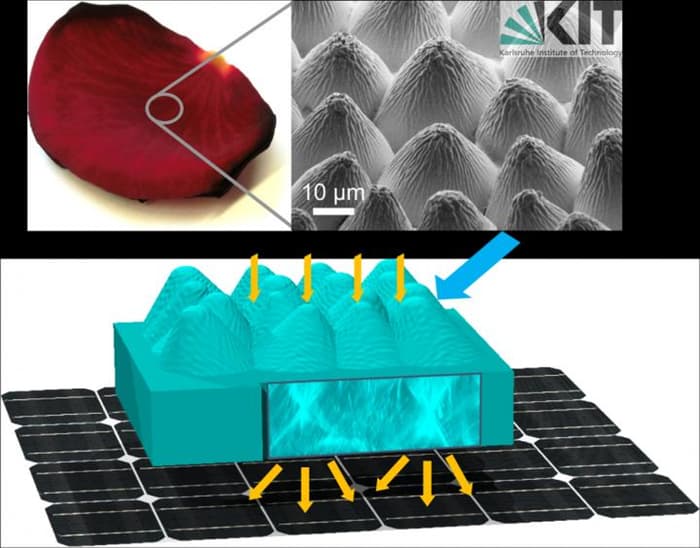
The researchers from the Karlsruhe Institute of Technology (KIT) and the Center for Solar Energy and Hydrogen Research Baden-Württemberg (ZSW) in Germany began their work by looking at the optical properties of the epidermal cells from a variety of different plants. They were particularly interested in the ability this outer layer had to absorb – rather than reflect – light.
They found that rose petals were particularly good at this skill.
"As the scientists found out under the electron microscope, the epidermis of rose petals consists of a disorganized arrangement of densely packed microstructures, with additional ribs formed by randomly positioned nanostructures," says a KIT report about the research. This not only allows roses to absorb more light, it creates strong colors that assist with drawing insects in for pollination purposes.
Once the rose was chosen as a good candidate, the researchers made an imprint of the outer layer of the petals by using a silicon-based polymer. That, in effect, created a mold. They then poured a clear optical glue into the mold and cured it under UV light.
That gave them an exact transparent copy of the structure of the rose petals' epidermis, which they placed atop existing solar cells where they saw a 12 percent boost in efficiency for light that hit the panels vertically. For light that came in at a sharper angle, the efficiency boost was even greater. (We've contacted the researchers to find out exactly how much greater and will update this article when we hear back.)
In May, scientists reached a new record in the efficiency of solar cells, logging a 34.5 sunlight-to-electricity conversion rate. Incremental improvements to that number through means such as those demonstrated with the rose petal structure will help to increase solar power's use as a practical energy source.
The researchers are now working to investigate the role of a disorganized surface such as that in a rose petal's epidermis in other photosensitive surfaces and hope to find further improvements in the efficiencies of solar cells.

 Previous page
Previous page Back to top
Back to top







